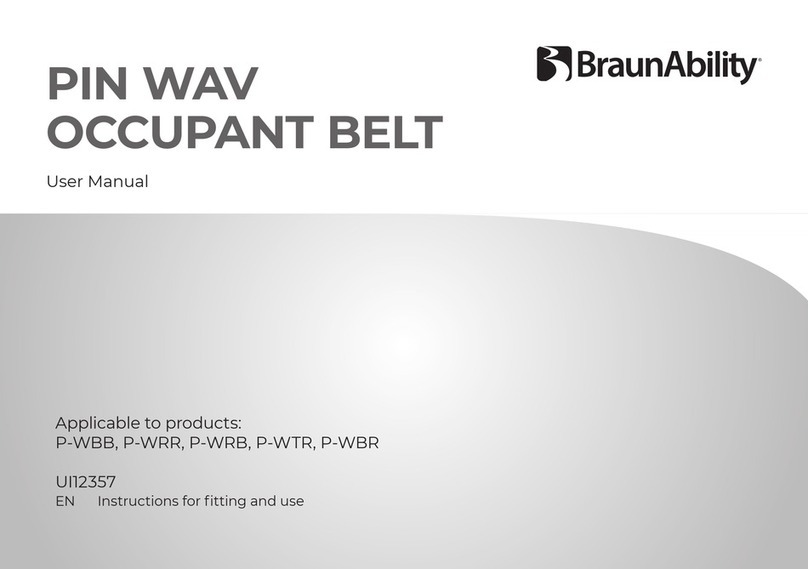
Before installing and using the TOR Lap Belt - occupant restraint
• Ensure that the wheelchair is correctly maintained and that the settings of any adjustable
parts are made according to ‘Instructions for Use in Transport’.
• Whenever possible remove any items of luggage etc that may be attached to the
wheelchair and secure or store separately during transport in order to reduce the potential
for injury to other passengers traveling in the vehicle.
• Extra care must be exercised when using vehicle boarding aids such as passenger lifts or
ramps during the loading process. Refer to ‘Instructions For Use’ for information on safe
slopes.
• Position the wheelchair facing forward - centrally in the designated region of the vehicle.
Ensure the wheelchair brakes are applied.
• To minimize the potential for head injuries in an impact, allow a clear space of at least
450mm (18in) behind and 650mm (26in), (FCZ, front clear zone), in front of the head of the
wheelchair user, (Fig A). The shoulder belt anchorage must be roof or side-wall anchored
at a height level such that the belt webbing passes over the midpoint of the occupant
shoulder and at a height that is at or just above the level of the occupants shoulders so as
not to impose downward loads on the spine.
• A height provision (HHT) ranging from 1000mm to 1550mm should be made, depending
on the size of the passenger. There should also be 200mm of clear space either side of
the wheelchair centre line. If these clear space dimensions cannot be provided then
any structure protruding into this space should be adequately padded and comply with
impact performance requirements of ECE Regulation 21 ‘FMVSS 201’. All vehicle padding
should comply with the ammability requirements of ECE Regulation 118 ‘FMVSS 302’.
Note: seated head
height (HHT)
ranges from as low
as 1000mm (39in)
for a 6-year-old
child to 1550mm
(61in) for a tall
adult.
8Occupant restraints




























